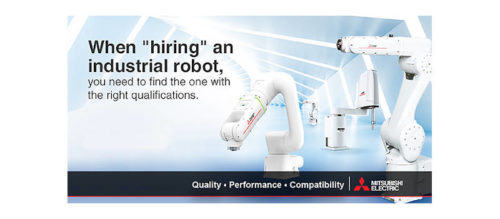Robotics are picking up the pace
Researcher considers why developments in robotics are gathering pace and highlights some of the most recent advances.
Robotics insights
- There are several advances making robotics better and more durable for a variety of applications. Mechanical grippers are being made to become more lifelike.
- Software to make cartesian and gantry system design fast and error-free has enabled swift turnaround times and is useful for material handling and warehouse applications.
创新的加速是一个至关重要的topic for debate in the engineering automation sector. Changes driven by global events are apparent in many businesses – labor shortages, rising energy costs, or the need for higher flexibility and productivity. These disruptors are creating increasing opportunities for automation and robotics.
Amazon, for example, is now using work cells that pick and place individual random packages using AI and vision to optimize performance. Mobile pallet-lifting robots incorporating the latest sensors and autonomous controls work safely alongside human operators. Meanwhile, Tesla has revealed its Optimus humanoid robot, making significant strides in a short time. Such new entrants into the robotic sector will further drive the pace of change.
Handling innovations
One example is mechanical grippers – usually with two or three fingers that move in parallel or angled motion. These grippers mechanically squeeze or engage with the profile of the component to be moved. Design reviews have removed material, not only reducing cost but also reducing moving mass. Higher technology grippers also offer more flexible control over position and force using fieldbus protocols. Festo has demonstrated several solutions for flexible grippers inspired by nature that wrap around the product, like human hands and fingers.
These range from flexible gripper fingers that mount onto standard mechanical grippers or wholly soft devices more akin to a gecko’s tongue or octopus’s tentacle.
LifeTech (or Life Sciences) has been one of the fastest-changing robotic sectors. This has partly been due to the Covid pandemic rapidly accelerating the use of highly automated processes in drug discovery. Festo has supplied cartesian-based robot solutions for many of these applications. The scale can vary from a complete system no larger than a sheet of A4 size paper to other industry applications with gantries spanning more than 30m2.
Software to make cartesian and gantry system design fast and error-free has enabled swift turnaround times. A design and selection package called Handling Guide Online [HGO] allows us to input the application requirements in the customers’ language, such as the stroke lengths, mass to be moved, etc. The HGO then looks for all possible solutions based on feed forces, inertia, and mechanical bearing specifications and then prioritizes them. Price may be the most critical factor – but so too can power requirements or safety factors for bearing overload.
Models created within the HGO contain not only the simulations but also the mechanical design and bill of materials. The 3D CAD drawing is made in numerous formats simultaneously and includes documentation for electrical wiring and programming I/O allocations. This data transfers seamlessly into the preferred documentation software such as EPLAN. Kinematic models can be picked up within higher-level simulation packages, enabling the simulation of complete stations. So, the operating (PLC) program can be pre-written and virtually commissioned before any metal is cut or assembled.
Looking forward
The whole process of industrial automation is changing. Increased access to easy-to-use, free-of-charge software means customers can specify many handling and automation systems independently. Where additional support is required, remote consultation has become the norm and is frequently provided faster than site visits are allowed. These fast, online services set the trend for accelerated robot design and delivery in the future.
– This content originally appeared onControl Engineering Europe.
你有经验和专业知识的遮阳帽吗cs mentioned in this content? You should consider contributing to our CFE Media editorial team and getting the recognition you and your company deserve. Clickhereto start this process.





